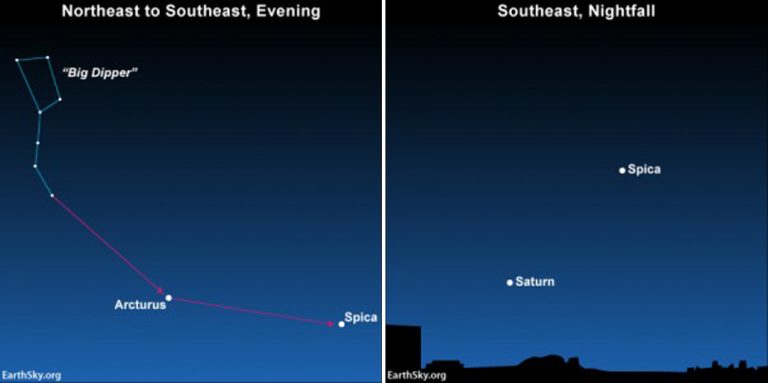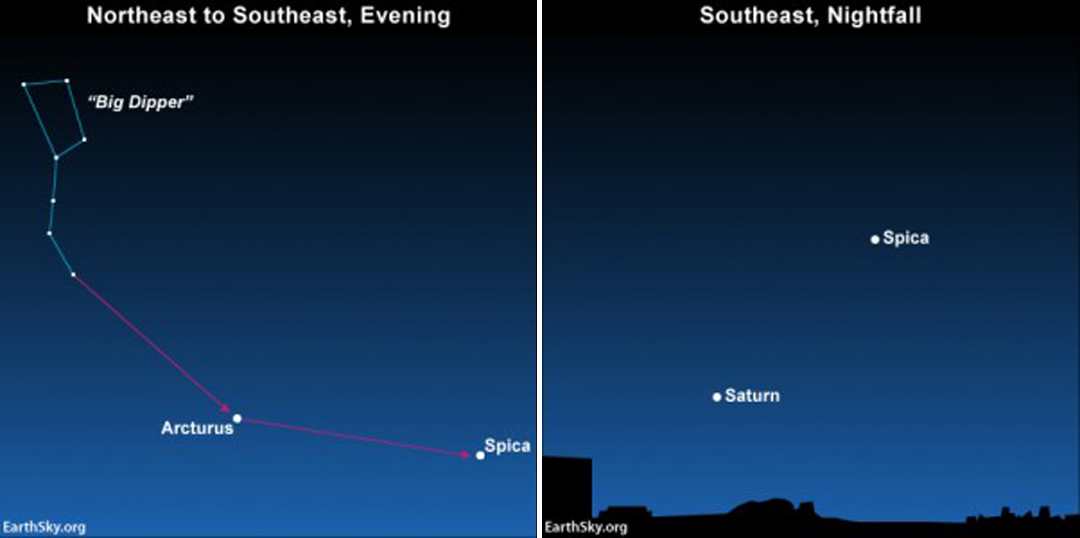If you’re a lover of Saturn then tonight is a very big deal because the rings of this stunning beauty are going to be visible to the naked eye. The prime viewing time occurs both tonight and tomorrow night (April 27th and April 28th, 2013), with less ideal viewing occurring from dusk till dawn for most of May 2013 as well. There are two methods for finding Saturn in the night sky:
THE JUPITER METHOD (least reliable): Look for Jupiter in the western sky from early-to-mid evening. When you find Jupiter in the west (it will be the brightest of all objects in the sky) then turn 180 degrees in the opposite direction and look in the eastern sky — very close to the horizon — to find Saturn. How can you be sure that you’re looking at Saturn though? Saturn shines with a golden light, and it’s a planet so it does not twinkle as much as stars do. It will be travelling towards the western sky throughout the night.
‘DRIVE A SPIKE TO SPICA’ METHOD (most reliable): Spica is the brightest star in the Virgo constellation, and provides the best means for tracking down Saturn in 2013. Saturn will be sitting just below Spica in the evening sky and they will be very close to each other throughout the night. In order to find Spica you must look first for the Big Dipper in the northeastern sky. Once you find the Big Dipper, follow the arc of the handle to the star Arcturus (see image below), then drive a spike to Spica from there (it will be in the southeastern sky). Once you find Spica you will notice a bright golden star-like object very close nearby and that’s Saturn. Spica shines blue-white and twinkles, while Saturn shines golden and does not twinkle.
Saturn will be out from dusk till dawn from now throughout the month of May, but once again, tonight and tomorrow are the best nights to see Saturn and get a look at its rings if you stare deep enough. Saturn shines very low in the east after sunset, and climbs highest in the sky around 1:00am, and eventually sits low in the west at dawn.
SEE ALSO: Scientists Discover Rainwater Falling Out Of Saturn’s Rings Is Causing Dark Zones
SEE ALSO: The Insane Hexagonal Storm Over Saturn’s North Pole That’s Happening Right Now



